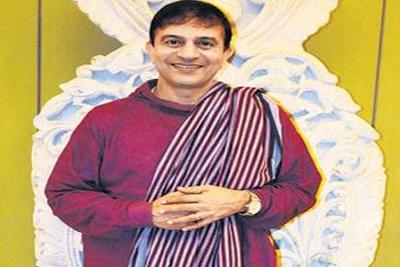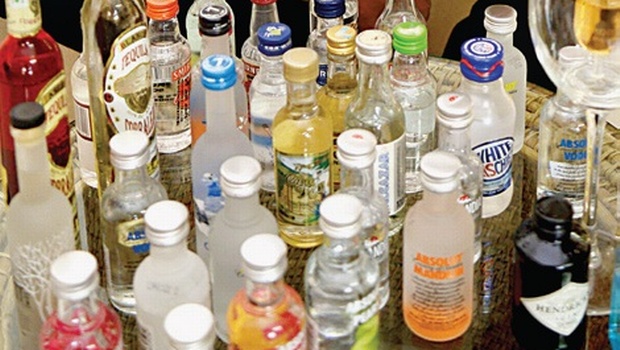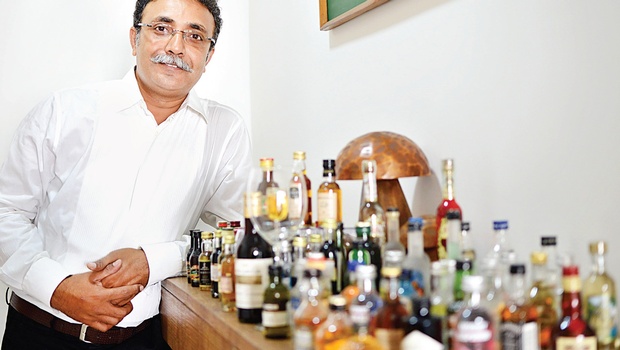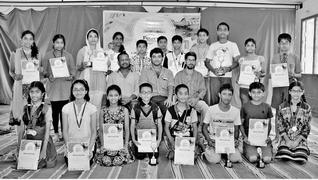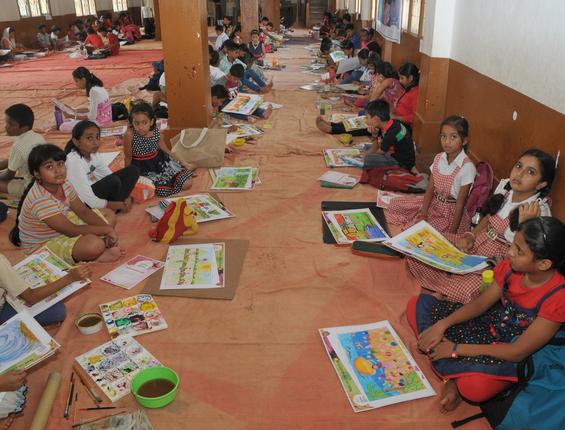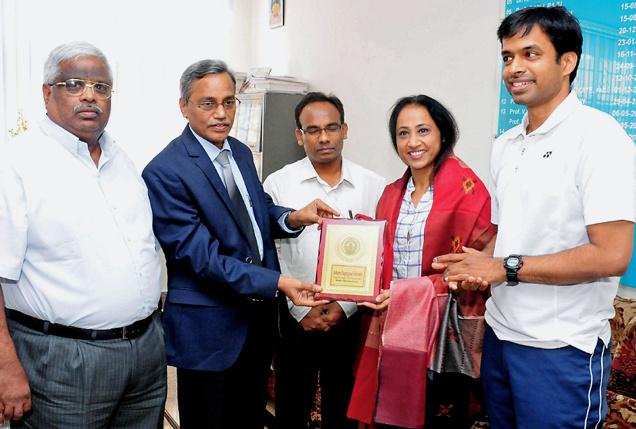Need is the mother of all innovations, goes an old adage. It is also true that solutions to most of our problems are always around us. So, when a Huye-based farmer sought sustainable ways to market local coffee and promote Rwanda’s unique tourism attractions to the outside world, the resources at hand came in handy.
The farmer created a ‘coffee experience tour’ hiking trail across the Huye Mountain Coffee plantation and the historically important Nyirankoko hill just above the plantation. Where does the coffee you drink at Ban Café or any other coffee houses come from? Or why would one visit a coffee or tea farm, or a cattle ranch? These questions are expounded on during the hike and, by the time one descends the hill, they are ready to roast and brew their first coffee as the hike takes you through all the stages of the coffee production process, right from planting to roasting and coffee brewing. The ‘coffee tour experience’ trail is unique in that it has created a synergy, promoting agriculture and tourism as one product.
This agro-tourism initiative is essential as the country seeks more products to market to the world and boost tourism receipts. It is even more important as it creates awareness about the two sectors, helping expand their markets and add value to clients’ experience in the process.
The approach has made it possible for farmers working with Huye Mountain Coffee to get a ready market abroad and better prices for their coffee. Besides, it strengthens efforts by the government and other stakeholders to create 200,000 off-farm jobs per annum under the second Economic Development and Poverty Reduction Strategy (EDPRS II). Innovative approaches like this one will play an instrumental role in helping the country realise this objective.
Agro-tourism, in simple terms, involves any agriculturally based operation or activity that brings visitors to a farm or ranch, according to Farm Concern international (FCI), an Africa- wide market development agency focusing on commercialisation of smallholder farmers and agro- pastoral communities.
Huye Mountain Coffee tour experience trail
When I visited the recent Made-in-Rwanda expo at Gikondo Show Grounds in Kicukiro, Huye Mountain Coffee was one of the exhibitors. A closer look at the brochures from the attendants at the stall indicated that the firm was more than just a coffee processor. I learnt from the brochures that they had recently introduced a new product targeting coffee lovers and buyers – the ‘coffee tour experience’. This was intriguing… so I was curious to go check it out.
About 10 days later, I hit the trail in company of other 10 visitors from the US. Our guide for the day was Aloys, or Mr Coffee, as he is fondly called, who took us through the trail on paper at the reception centre at Gako trading centre, explaining the various 12 stages of the coffee tour in preparation for the hike. After the briefing we boarded our vehicles for a two-kilometre ride on a rather bumpy and steep gravel road to the starting point. The trail begins at about 1,689 metres above sea level, with an introduction about coffee planting and the initial growing stages of the crop.
We went through other stages, and I learnt that the coffee tree life cycle is over 50 years. We also learnt of some of the enemies of coffee, like the berry bola disease, leaf rust disease, coffee bug that gives unpleasant potato taste. Mr Coffee says the firm mostly uses organic means to fight these enemies, including tobacco and pyrethrum organic pesticides. The harvesting stage comes next (during my visit it was off-season) that prepares visitors for the exciting coffee roasting (using Rwandan traditional means) at 1,870 metres above sea level. This is done under an acacia tree that provides much-needed shade (on day hot day like when I visited). It’s here that we introduced to the coffee roasting process using the Rwandan traditional technology.
One gets that sense of satisfaction roasting green coffee beans to a rich dark brown (colour) that makes for aromatic coffee distinct to Rwanda. And the aroma… Nothing beats the aroma of freshly roasted Rwanda coffee!
‘Tour of Rwandan culture and history’
The icing on the hike is when visitors embark on the second segment of the trail, which marks the ‘tour of Rwanda culture and history’ as visitors explore the breathe-taking Nyirankoko rock, just about a 100 metres from the coffee plantation.
Mr Coffee takes you through the history of Rwanda particularly during the era of the kingdom and inter-kingdom conflicts. He tells us that the hill’s name originate from an incident in 1348 following a confrontation with the then Burundi kingdom army. The name was given to Nyirarutenge by king Kigele I for her heroic acts in helping them defeat the Burundian army, according to legend.
Nyirarutenge was buried at the foot of the rock after she was killed by the Burundi kingdom soldiers. The rock and hill were to later be renamed Nyirankoko by the king in honour of Nyirarutenge.
“From then onwards, all Rwanda kings would hold planning meetings with their military advisors at the rock before any military operations with neighbouring kingdoms and communities to ensure victory,” Mr Coffee concludes the legend.
He notes that the rock, shaped like a meeting place at the top, is complete with a chairman’s chair, and ‘stairs’ leading up from the bottom of the rock’s upper side. Standing on top of the rock, one can see all the surrounding villages, terraced hill bellies, meandering roads and pathways in the lower valley and shinny tin roofed houses of communities surrounding the ‘holy’ mountain.
The final lap of the hike leads you to the hilltop. When here, you cannot ask more; this is the highest peak at 1,986 metres above sea level, but it’s almost flat. It hosts the ‘coffee tour experience’ trail monument and gardens, complete with tents and chairs. Those too tired can grab much-needed rest, relax, and stretch their aching muscles and bones.
Atop Nyirankoko mountain, one is able to see all the surrounding communities, Huye Mountain on the eastern side, Huye town, Nyanza town, Rugwogwe, Mount Simbi, as well as Sovu town and Gako trading centre.
The monument that tells of the history of the enterprise; the pedestal that has a pot and a coffee tree growing therein, also documents the humble beginnings of the leading coffee washing station in Huye District, from the time they were using wooden ‘bicycles’ to ferry red coffee cherries to their small washing station way back in the late 2000s.
The enterprise now operates a fully-automated washing station at the foothill. Mr Coffee says the coffee tree in the pot signifies the firm’s resolve to promote coffee drinking among Rwandans as part of the local culture.
He argues that since the country grows the beans, Rwandans should partake of the beverage as part of the daily menu besides earning foreign exchange from the beans. Mr Coffee believes the ‘coffee tour experience’ will greatly impact the competitiveness of Rwanda’s coffee, noting that most visitors write blogs about the hike when they return to their home countries.
“This is a plus for Rwandan coffee and for us; we are currently expanding potential and giving opportunity for others to join the sector,” adds David Rubanzangabo, the brain behind the venture and the Huye Mountain Coffee chief executive.
He told me later, that the ‘coffee tour experience’ was introduced partly to demystify the coffee production value chain because many coffee lovers, including Rwandans, don’t know much about the beverage, especially how it is made.
He adds that though the firm opened shop around 2011, “it was like something was always missing to make the enterprise more beneficial.” Rubanzangabo says the tour is also strategic marketing, noting that visitors who participate in the hike “will always remember Rwanda’s unique coffee and recommend it to others”.
“It (tour) is a big marketing tool for us… the agriculture-tourism mix helps hit multiple birds with one stone – we teach visitors about our coffee and its importance to Rwanda’s economy, they get to understand why it’s costly on shelves in their home countries, and we also showcase Huye and Rwanda tourism attractions to the outside world,” he explains. He argues that creating a synergy between the two sectors benefits every stakeholder, and gives more value to visitors and local products (tourist attractions and coffee).
Tourists narrate experience
Randall Diericks US citizen resident in Kigali, says the coffee tour opened his eyes to the realities about coffee farming, noting that he now understands ‘where my coffee comes from’.
He says the hike of the Nyirankoko hilltop after initial coffee processing tour gives a rich historical perspective of Rwanda, and adds value to trail, enriching the visitors’ experience. He says the Nyirankoko rock atop the hill is like that in the legendary “Lion King” kids’ cartoons. Przemek Praszcalek from the US, says it was fun learning about coffee and hiking. He says the traditional coffee roasting at the third stop on the hike was insightful, and the “roasted beans were aromatic and delicious”.
Advisory
The hike will take you under three hours, especially as Mr Coffee puts his charm to use explaining the making of Rwandan coffee, detailing all the processes from the garden to the cup. After hiking, tourists are taken through the coffee pulping process at the plant’s modern coffee washing station downhill.
From the reception centre in Gako town, one can use a bike or car to the starting point that’s about 2km away.
You are advised to carry fresh drinking water, sports shoes or jungle boots can suffice for the hike, and you need not carry warm clothing, especially during the dry season. Don’t forget that camera to capture the moments.
The hike is suitable for most people, including kids of five years of age, and grannies. The day I was there, there were about four kids (and they made it to the top effortlessly), and a granny who could be close to 80 years of age.
Challenge that birthed Huye Mountain Coffee
Rubanzangabo worked with two USAID-sponsored projects (PEARL and SPREAD) that were promoting coffee growing in the area in early 2000s.
He says when President Paul Kagame was launching one them in 2002[3], he challenged him, asking what would become of the initiative at the end of the projects. He said, “After these white men have left, will you be able to continue on your own.” That put the entrepreneur in him (Rubanzabagabo) to test, and vowed to carry on similar work as was being done by the two projects, giving birth to Huye Mountain Coffee brand operated by David and Family Company Limited, years later. The brand name derives from the fact that most of the coffee (70 per cent) processed by the firm is provided by farmers around Mount Huye. He says the firm works with over 600 farmers organised in 24 savings groups.
PPP model
The venture is a perfect example of how the country can use the private-public partnerships (PPP) model to promote investment and spur development initiatives across the country. Rubanzangabo says the firm is working with the local and central governments to promote the ‘coffee experience tour’ trail, especially among Rwandans.
Only about 10 local people have so far participated in the hike almost a year (nine month to be exact) since the trail and agro-tourism venture were initiated, according to Mr Coffee.
Mr Coffee says the majority of the tourists are from the US, Europe, Japan, Australia and China. Rubanzabagabo says Nyirankoko mountain belongs to the district but was given to the firm by the local authority for tourism and projects that benefit the community. As a result, people from the surrounding communities are not charged hiking fees, and 5 per cent of the tour earnings support community projects. Ironically, this incentive has not excited them to go hiking already! Both the local authority and central government provide security along the trail and on the plantation, and help promote the trail as a tourism product.
Rubanzangabo says that they are working with local leaders to promote the trail among the community and surrounding districts, and the general Rwandan population.
The firm sells most of its coffee to global brand; Stumptown Coffee Roasters of USA, Falcon Coffee Roasters (England), L Coffee of South Korea, UCC from Japan and Single Origin Coffee Roasters of Australia. The coffee is marketed under the Huye Mountain Coffee brand name, according to Rubanzabagabo.
source: http://www.allafrica.com / allAfrica / Home> The New Times / Opinion by Stephen Nuwagira / March 22nd, 2016
